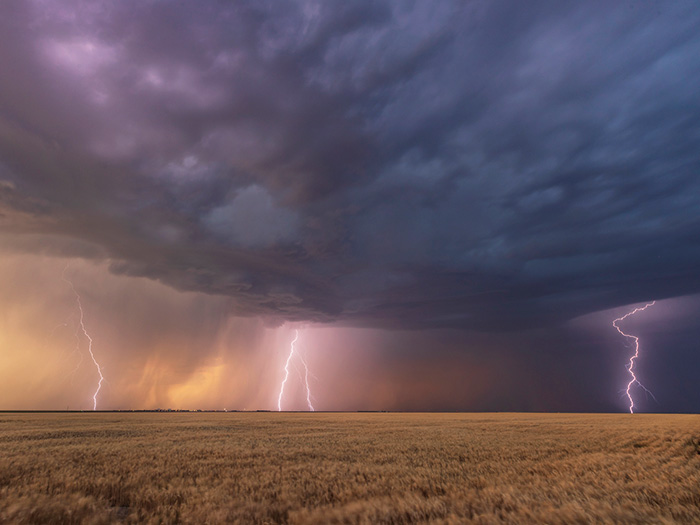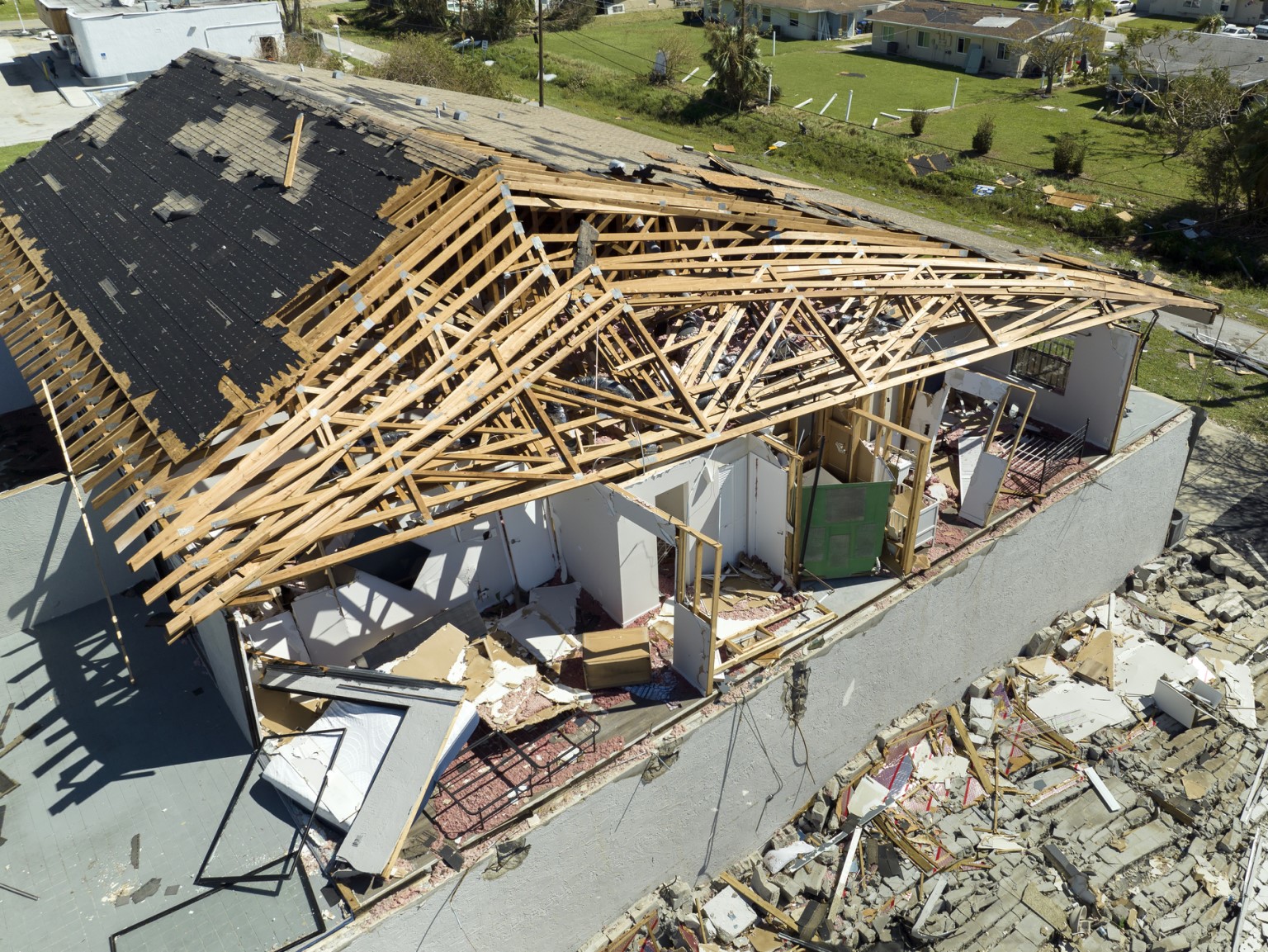Parametric Covers Are Finally Gaining Traction. Here’s How Companies Can Benefit

The traditional insurance model insures against specific losses, but in recent years, another model, parametric insurance, has been picking up steam.
“Parametric insurance, sometimes also referred to as index-based insurance, is an insurance product that offers a predefined payout based on a triggering event,” said Daniel Vetter, head of North America for Descartes Insurance Solutions Agency, Inc.
Tom Markovic, global head of the Parametric Center of Excellence for Marsh Specialty, describes it as “any type of solution that’s based on a third-party index that can be used to mitigate some type of an exposure. It can take a very broad scope of things, anything from natural catastrophes, whether it’s windstorm or earthquake, to items such as cyber terrorism, pandemics, and so on.”
The History of Parametric
Parametric insurance dates back to the 1990s, and Vetter credits Swiss Re and Munich Re as the first to offer the coverage, which began to gain traction in the late 2000s.
“It was when sovereign risk transfer started taking place for catastrophes and Mexico or the group of Pacific Island nations wanted to get some coverage for their catastrophe risk,” said Akshay Gupta, SVP and head of parametric solutions at Berkshire Hathaway Specialty Insurance. “That’s when it started making its way as an instrument that could be used for covering catastrophe risks.”
The triggers or parameters that lead to a payout must be quantifiable, such as windspeeds or categories for hurricanes, magnitudes or local intensity of ground shaking for earthquakes, etc.
“It should be transparent and publicly available,” said Gupta. “It has to be transparent in the sense that multiple people should be able to access the same information or generate the same information using the methodology that’s put in place.”
Early on, such data could be generated by proprietary models, which weren’t always publicly available.
“What they would do is put these models in escrow, so that the version of the model was locked, so nobody could change that version and people could rerun them as and when the event happened to try to get a measure of the trigger parameter that occurred,” said Gupta.
“But over the past few years, we’ve seen a tendency to move to more publicly available information, such as directly available from the National Hurricane Center or from the United States Geological Agency or similar agencies across the globe.”
The Drive to Popularity
Among the drivers of the movement toward parametric insurance are the increasing frequency and severity of weather events due to climate change and the hard market resulting from it.
“In today’s market environment, think about wildfire, for example, or hail or tornado, where coverage is no longer available or has become exorbitantly expensive, and the scope of the coverage is super narrow,” said Vetter. “These are risks that are moving increasingly into the parametric space.”
Advances in technology have also been central to the expansion of parametric insurance.
Vetter cited advances in radar and satellite technology: “We can give a shout out to Elon Musk and SpaceX, which increased the opportunities and possibilities for the private sector, particularly when it comes to satellite technology,” Vetter said. “And we are deriving a lot of new data from these sources.”
The increasing sophistication of tools like AI is also important.
“It really goes towards the field of data science in a certain way, where you are able to derive more intelligence from particular data sets,” said Gupta.
Parametric: Simple and Straightforward
One particularly attractive feature of parametric insurance is the absence of traditional claims processes.
“The product we’re selling is predefined as far as the trigger mechanism and the payout is concerned,” said Vetter. “In a post-event environment, we really don’t want to have any ambiguity; we don’t want to have any doubt whether or not the cover has triggered. And that’s associated with one of the key features of the product, which is a complete absence of a traditional claim settlement process. The index triggers, the payout follows.”
Gupta agreed. “You don’t need to ask for reams and reams of information from the customer,” said Gupta. “The customer doesn’t have to document all their direct and indirect business losses. You don’t have to send people out to the insured’s locations. You don’t have to have calculation of the physical damage and how much it will take to repair. All of that’s taken out of this.”
This enables payouts to be made almost instantaneously.
“Parametric is ideally suited for quick execution, within minutes,” said Markovic. “As soon as the data is pulled from a third party source and verified in a third party system, here’s the payout to your account a day later.”
That quick payout can be critical.
“Organizations find themselves oftentimes in the aftermath of these events quite cash constrained,” said Vetter. “And so parametric policies can offer a very elegant way of an almost instantaneous cash infusion.”
This is especially beneficial in the context of a natural catastrophes or other broadly impactful events that can leave claims handlers overwhelmed, further delaying payouts on traditional coverages.
The Insurance Nuance
Of course, if the parametric is purchased as insurance, there does have to be a loss for there to be a payment.
“These products can be, and are, placed as both insurance and derivatives,” said Markovic. “If placed as a derivative, there is no proof of loss, and settlement is immediate. If placed as insurance, there is not a claims process per se as it exists on the traditional side.
“All that is required is that an officer of the firm buying insurance attests to having losses equal to or greater than the payout received,” he continued. “Since many times parametric is used to cover deductibles or lower layers, it is quickly clear that the losses will exceed the payout on the parametric program — especially since any financial loss can be used for this, and it is not driven by physical damage. And yes, a true up might be possible within six to 12 months.”
In some cases, the covered loss can even precede the trigger.
“We have companies that are looking to cover their costs for preemptive mitigation before an event, whether the event leads to damage to them or not, but they’re still expending cost in preparing for an event,” said Gupta.
Enhancing the Traditional Insurance Model
Parametric is rarely used as a replacement for traditional insurance but more as a complement.
“What we’re seeing in practice in the marketplace is that nine out of 10 times, [parametric] works in combination with a traditional product for purposes such as a deductible buy-down,” said Vetter.
“A parametric product can be a very elegant way of bringing a deductible back down to where it was in its original format,” Vetter continued. “Think of parametric insurance as a way to carve out a certain weather peril for a given location or a series of locations in an effort to push up the attachment point of the traditional insurance program [or] as a way to complement capacity that the traditional market is no longer offering to a certain customer or a geography.”
Markovic added one note of caution: “Our suggestion is always, it’s a complimentary tool, one next to the other. Syncing them is not a perfect alignment, because there are different triggers. You cannot just simply use one below another, have a perfect alignment. But certainly you can use parametric to cover gaps on the traditional side when it comes to deductibles and so on.”
And Vetter pointed out that, while not as common, some insureds do move all their insurance to parametric.
“This is typically a decision that happens at the chief financial officer level. Oftentimes it’s a board decision,” he said.
For some, Vetter said, “Parametric is essentially a liquidity instrument because of the almost instantaneous payout that follows a triggering event. CFOs look at this very much in the context of almost a replacement or a substitute of having to tap into a credit facility to get to cash in a post-event environment. And so, organizations that look at this from an overall corporate finance perspective, typically, we’ve seen those organizations move increasingly away from traditional insurance and move towards parametrics.”
Advice for the Insured
For insureds considering parametric, pricing comparisons to traditional coverages can be difficult.
“People tend to want to compare traditional pricing to parametric pricing. You can’t,” said Gupta. “They’re proverbial apples and oranges, because they’re covering different things.”
But he added, “If you were able to get a layer on the traditional versus the parametric on a pure apples-to-apples basis, which is very, very difficult to do, I would contend that the parametric coverage should be more expensive than the traditional coverage because of the other features it has, like speed of payment, broad definition of loss, etc.”
But parametric pricing can also be quite flexible.
“A parametric cover can be made as expensive or as inexpensive as a customer would like to make it,” said Vetter. “We have several levers that we can play with.”
In addition to adjusting limits, pricing can be impacted by altering the numeric trigger.
“If it turns out that a hail cover that attaches at an inch and a half of hailstone size is too expensive, one lever that we can pull is to see what pricing does if we increase that to two inches,” Vetter explained.
“We can play with the limit, and the limit in parametric insurance, unlike traditional property insurance, is not the total insured value, necessarily, because with parametric insurance, we capture property damage, business interruption and any additional financial impact a customer suffers from a climate event.”
A Future for This Niche
There seems to be broad agreement that parametric will continue to gain popularity.
“The awareness of these tools will continue to increase quickly,” said Markovic. “We see it more and more across various types of clients. We see the products that are more established now, like hurricane and earthquake, continue to pick up and be the foundation, but we also do see the new technology and new risk being matched, like flood, severe convective storms in the U.S., other regions might have hail.”
Markovic also anticipates an expansion into non-weather, non-cat type of events.
“Cyber, pandemic, impact on economy through foot traffic at airports … mortality risk, credit risk, defaults on large credit card providers — all of that is data driven, and data exists for that,” Markovic said. “One can structure solutions for that and protect the risk. They are not easy to protect against otherwise.”
Gupta also sees continued growth in parametric.
“We are seeing organizations retain more of their risk on the traditional side, with higher deductibles and such, and then transfer some of that retained risk through parametric covers,” said Gupta.
“We have seen organizations that value having the payouts available to them very quickly. And we are seeing organizations that have had poor experience with claims go towards a cleaner parametric cover, or simply add parametric covers for any gaps in their traditional coverage.”
But even so, he added, “I think it’ll take a few more years for it to really become mainstream.” &








